https://www.affilorama.com/blog/first-affiliate-marketing-sale

The lure of affiliate marketing is undeniable; who can resist passive income?
But to make that passive income happen, you have got to put in some work first.
To succeed in affiliate marketing, there are a number of crucial steps you must take before you earn that first affiliate profits. And these steps are, well … not passive.
The good news is that if you’re determined to make this work and are willing to put in the time and effort, you’re already well on your way to affiliate marketing success.
All the work you put in is to help you make your first affiliate marketing sale. There is nothing like a first sale to motivate you and make you keep at it.
So, what do you need to do to get started?
7 Steps to Earning Your First Affiliate Commission
We’ve broken down the process into seven steps for affiliate marketing beginners. Following this guide will set you on the right course and have you earning your first commission in no time.
1. Choose a Niche
Before you even begin building your first site, you’ll need to decide which niche you’re going to target.
Obviously, if you don’t know what your site is about or who you’re going to target with it, you can’t really build a site around it…can you?
If you’ve already figured this one out, way to go! This is undoubtedly one of the most difficult and overwhelming steps.
If you don’t quite know what your niche is yet, here’s some advice that you might find useful.
Some key questions to ask yourself when determining your niche are:
- What topics am I already passionate about?
It’s much easier to work on something if you’re passionate about it. Plus, when you have a passion, you’re usually quite knowledgeable about it too, so that definitely helps. For example if you have a passion about about makeup, your niche of choice might be makeup related, too.
- Is there money in this niche?
While following your passion is definitely the recommended option, sometimes the possibility of making money in a profitable niche trumps passion. So, you might not necessarily know much about your niche, but if it’s likely to make you money, you can always learn more about it, right?
For example, KitchenFaucetDivas is clearly a site that was built for profit, not passion. Unless of course there is someone out there with a serious passion for kitchen faucets! 😉
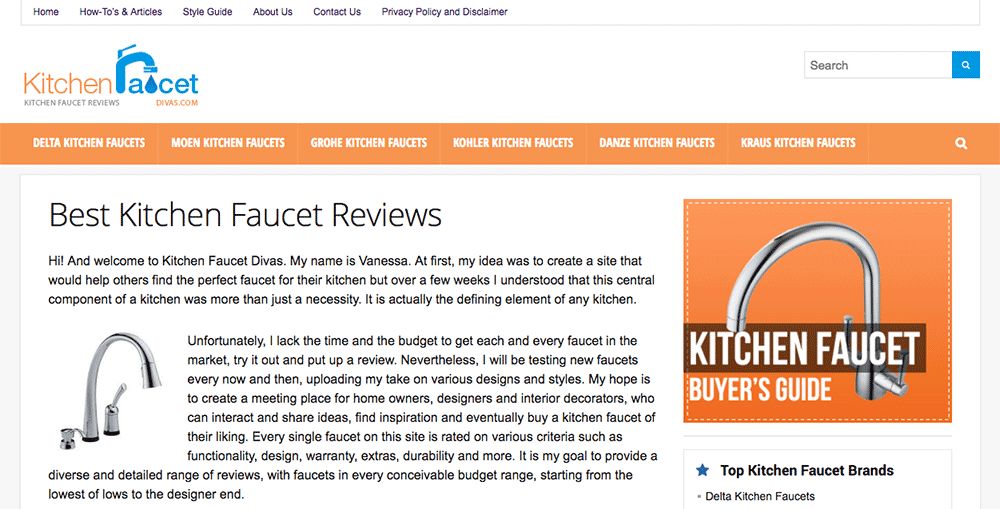
- What topic could I see myself easily writing 25, 50, or 100 blog posts about?
The topic you choose must have enough depth that you can create a lot of content for it. This is important for building an authoritative site, for search engine optimization, and most importantly, for the end user. If you don’t have enough content about a topic, you’re not going to be taken very seriously as an authority on the topic and it’s unlikely you can convince someone to make a purchase from you.
MoneySavingExpert is a great example of a site with a topic for which you would have a never ending supply of content ideas.

- Is there room in this niche for another affiliate marketer?
There are several profitable niches that are also very popular among affiliate markets (e.g., weight loss). Before jumping on board with a hugely popular niche, make sure there’s enough room for you. That is — will you be able to make money and compete with already established marketers? If not, keep looking.
- Is there enough interest in/demand for products in this niche?
The niche you choose might draw enough interest from your audience when it comes to reading and acquiring knowledge, but are they willing to buy relevant products too? Without consumer interest in products, your niche isn’t going to make you much money.
- Are there affiliate programs available in this niche?
This is obviously a crucial factor to consider. You might come up with an idea for a niche you know a lot about, but are there affiliate programs for the niche? No affiliate program = no sales. Time to look for a different niche.
Additional Resources for Choosing a Niche
Want to learn more about choosing a profitable niche? Here are some excellent resources we recommend for further reading:
- Free Lesson: 7 Steps to Finding Profitable Affiliate Niches
- From the Affilorama Community:
2. Research Affiliate Programs
Once you’ve decided on a niche, it’s time to find out what’s out there in terms of programs and products to promote. You’ve probably already done a bit of research for this while researching your niche — now you need to dig deeper.
Choosing an affiliate program will take some work, but don’t be afraid to invest a significant amount of time into it because this is, of course, where your income will come from. Choosing the right program will make it well worth your while!
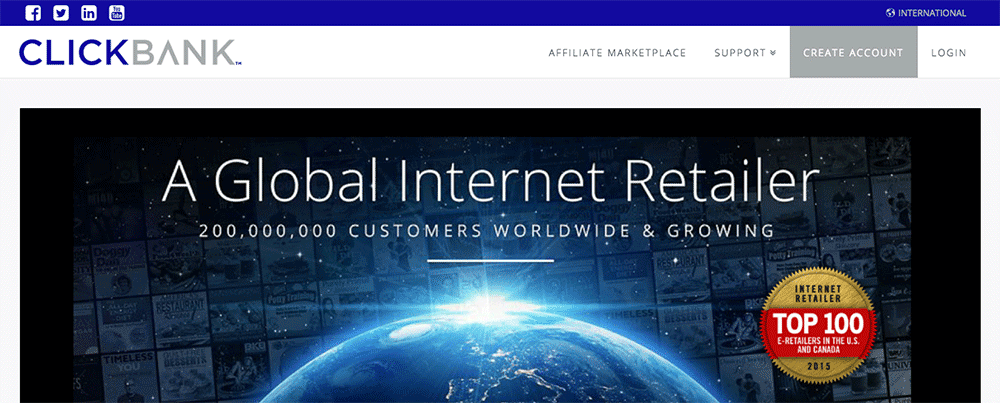
When choosing an affiliate program, keep these key points in mind:
- What type of merchants use the program/ affiliate network?
You want to make sure other similar sellers are also using the network, as this can help you gauge your likelihood of success with the particular program.
- How much commission are you likely to make from the products?
Make sure you sign up for programs that are profitable and generate a sufficient return in on investment. Some tips:
- If using ClickBank, products should have over a 50% commission (preferably 60%), and have a high gravity rating (meaning they’re in demand).
- For CPA (cost-per-action) programs, commissions should be over $1, and products shouldn’t be overly restrictive in how you can promote them.
- For physical products, look for commissions over $40.
- Do you want to be associated with the products and services?
The products and services you will be promoting to your audience must be relevant and good quality. Make sure you believe in them and know everything about them, because this will be crucial to you delivering the sales pitch to your audience. You need to build trust with your audience so make sure the products and services you choose to promote are trustworthy enough.
Ads like the one below often lead to sketchy products — do you want to be associated with a product that promises results that may or may not be true?

- What kind of support does the program provide?
Be sure to check what kind of customer support you can expect from your affiliate program once you have signed up. Do your research online and if possible, speak to other sellers using the program to get their thoughts. Can you speak to someone via phone or Skype or do you have to wait 72 hours for email responses? Be clear on this because trust me, you will need support at one point or another.
Additional Resources to Find the Right Affiliate Program
We’ve given you a few quick tips to help you choose an affiliate program that is right for you. For more information, be sure to check out the following:
- Free Lesson: How to Find Affiliate Programs
- Free Lesson: How to Choose an Affiliate Program
- Free Lesson: 10 Alternatives to ClickBank
- From Marketing Land: Choosing an Affiliate Network for Your Business
3. Build a Site
Steps 1 and 2 are all about research and figuring out what’s possible and profitable. Now, it’s time to start putting your research into action.
Assuming you don’t already have a website built, this will be the next step. Fortunately, building a site isn’t as complicated or labor-intensive as it was in the past.
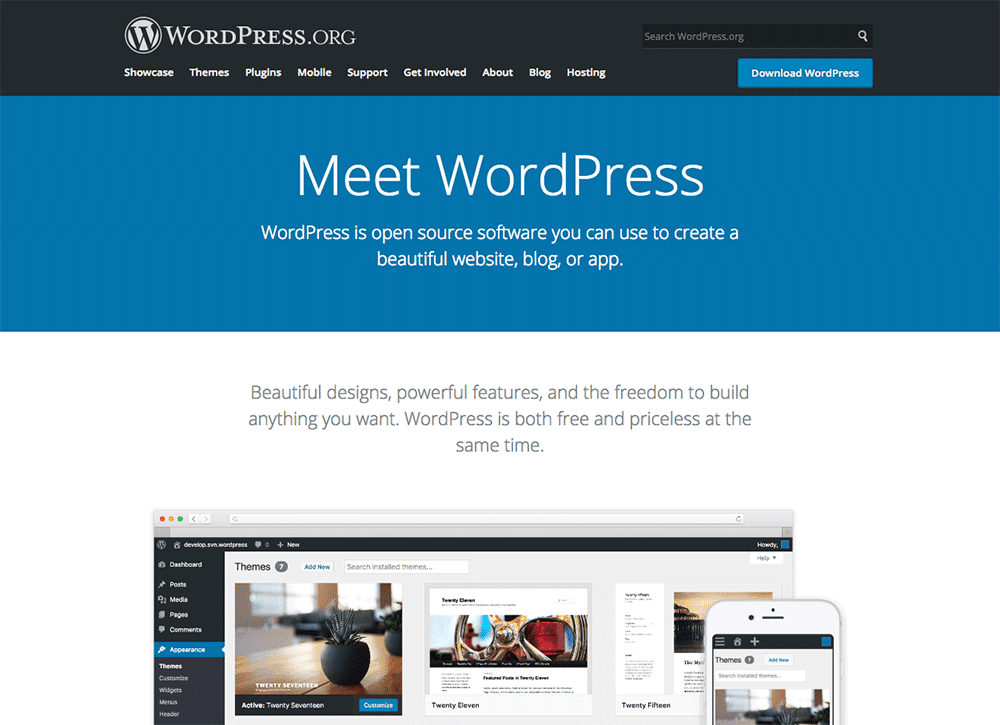
If you’re a newbie to building sites, the easiest way to set up a site is by using WordPress. The WordPress CMS is very easy to use and while coding skills can come in handy, for the most part you will not require any tech knowledge to set up your site.
You need to follow a few steps to have your site up and running:
- Buy a domain.
Your domain is the address for your website (e.g., www.affilorama.com) so this is the first thing you will need to do when setting up your site. Considering there are millions of websites on the internet, it’s possible that the domain name you want may already be taken by someone else. So make sure you have several options in mind. Be sure to read our advice on how to choose a good domain name.
There are several places you can buy a domain, including our very own Affilorama Domain service. Other well-known options are: GoDaddy and NameCheap.
- Purchase and set up hosting.
If your domain is your address, hosting is like the actual house within which your site will live. It’s your own little slice of the internet — the place where all your website files live. Hosting is very affordable these days, so don’t unnecessarily scrimp on costs. Go with a reputable, reliable provider because your affiliate marketing business depends on it.
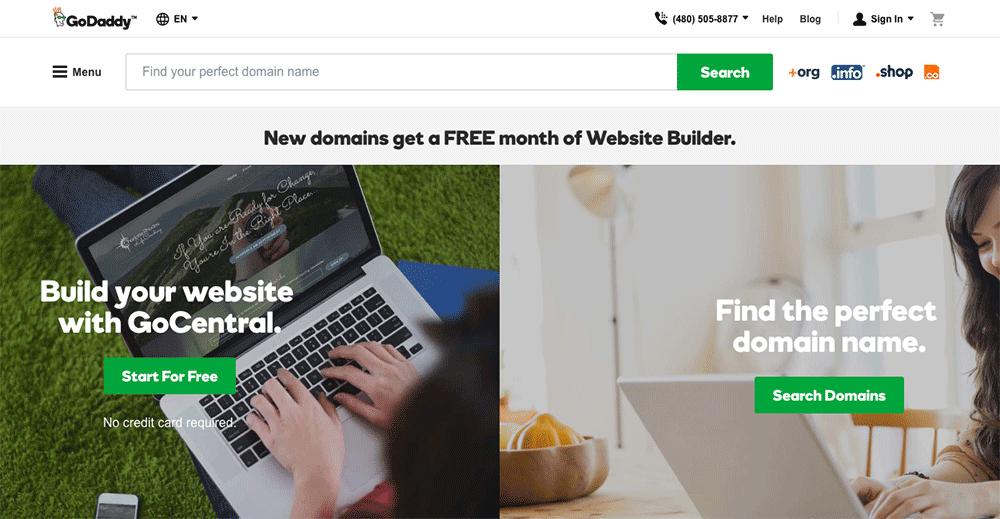
For more details on how to choose a reliable host, make sure to read our free lesson on What to Look for in a Hosting Provider. Some affordable and reliable hosting providers we recommend are GoDaddy, HostGator and BlueHost.
If you purchase your domain and hosting from different companies, you will need to link the two together. Don’t panic, it’s a simple process. Check out our lesson: Linking your Domain with Your Hosting.
- Install WordPress.
Once your hosting is set up, you need to install a content management system (CMS) for your site. We recommend WordPress because it is easy to use and a beginner (like you!) can quite quickly figure out how it works. Most good hosting providers will have a one-click install option for WordPress, which means it will only take you a couple of minutes and you will have WordPress installed on your site.
- Install your theme.
A WordPress theme provides all the styling of a site that you (and your audience) see on the front end. There are thousands of themes available, so choosing one might seem daunting at start. Our advice: go with something simple and easy to customize. You can always change it later.
The AffiloTheme is a great option. Completely customizable, and built specifically for affiliate marketers, you can use this WordPress theme to bypass much of the initial learning curve other affiliate marketers will experience. You can also search for themes on a site like Theme Forest.
- Create content.
Finally, once your site is ready, it’s time to create content for it. The content you create must be relevant to your niche but also interesting and engaging enough to keep your audience coming back. You should also ensure the site content is search engine-friendly. More details about content creation in Step 4.
Additional Resources for Building Your Site
For more information on building your first affiliate marketing website, we recommend the following resources:
- Free Lesson: Affiliate Website Building
- Free Lesson: 7 Crucial Site Building Mistakes You Need to Fix
- From the Affilorama Blog: How to Build an Affiliate Website using WordPress
- From the Affilorama Community:
4. Produce Excellent Content
Now that your site is set up and you’ve joined an affiliate program, you’re ready to begin perhaps the most time-consuming (but potentially rewarding) part of the affiliate business: Producing content.
This is where the overused but truer-than-ever phrase “content is king” comes into play.
Your goal for your site will be to establish it as an authority site in your niche, and the main way to do this is to consistently produce unique, high-quality content.
This could consist of:
- Product reviews.
Your affiliate site model could be based off writing reviews about different products or services. This is a common model and if done well, can prove very useful in generating affiliate income.
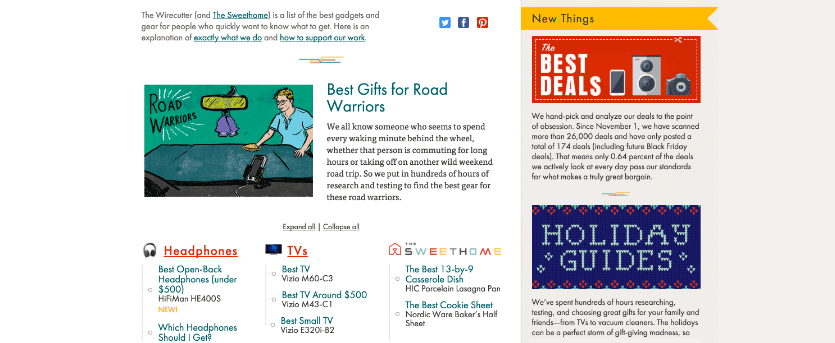
For example, The Wire Cutter is focused on writing reviews of several different kinds of products and helping their readers make the best decision about the product they want to buy. After reading a review on their site, if the user clicks through to the product/service using the affiliate link, The Wire Cutter will earn a commission from.
- Blog posts that address common problems, questions or issues relevant to your target market.
Creating blog content is a very useful and effective way of consistently building content on a site. When creating blog posts, it’s a good idea to do some keyword research to figure out what it is that your audience is interested in and searching for online. Also, be sure to research competitors, forums and social media to narrow down on topics for your blog.
For example, Security Guard Training HQ has a very extensive blog on a variety of topics relevant for anyone interested in security guard training, jobs and more.

- Evergreen content.
If you are building a site that has the potential for information that will never age and remain useful for your audience, you have the opportunity to create what is known as evergreen content. It’s important to carry out extensive keyword research before planning any evergreen content for a site like this, as your site could hugely benefit from the proper usage of keywords within such content.
For example, the content on Super Weddings is useful whether you’re organizing a wedding today or next year. All the content on the site is created accordingly. To make things easier for the audience, it is separated into categories to make it very convenient for the reader to find what they’re looking for. This, of course, is also very good for SEO.

- Informational products.
Giving away a free informational product such as an e-book, an email series or a mini-course is a popular tactic many affiliate marketers use. Usually, your readers will have to provide their email addresses to receive the product from you. You can then use this to sell to them via email marketing. Additionally, an informational product can generate interest in the actual product you’re trying to sell. If your product is popular enough and brings enough traffic to your site, you could also monetize the traffic in other ways, such as AdSense.
A good example is DatingMetrics, where you’re tempted with a Free Texting Crash Course in exchange for your email. The real marketing will begin once the user has downloaded this course.

The type of content you create for your website will largely depend on your niche, as certain types of content perform better in some niches than others.
Remember: Purchasing generic content is NOT an effective method to build your site. While it may be tempting to populate your site this way, in the long run it won’t help you to position yourself as an expert in your niche (and ultimately means less traffic and fewer sales).
Additional Resources for Creating Your Content
- Free Lesson: Content Creation
- From the Affilorama Blog: 3 Content Marketing Tips for the Busy Affiliate
- From the Affilorama Community:
5. Build an Audience
Building an audience for your site will, in some ways, follow naturally once you start producing excellent content. An interested audience will not only bring you consistent traffic, but also result in consistent sales for you.
So how do you start building an audience for a completely new site? Here are some ideas:
- Promote your content via social media.
The easiest and most common way to start building an audience for a website is via social media. Depending on your niche and industry, you can choose from Facebook, Twitter, Instagram, Pinterest and several other niche and location-specific networks. Building up an engaged and interested following on social media is a great opportunity to build relationships and once you have their trust, promote your products and services to them.
I’ll use MoneySavingExpert.com as an example again. The site has over 154,000 likes on its Facebook page and it connects with the audience by sharing links to content but also asking money-saving/budgeting related questions. The highly engaged readers then visit the website, where they read content and no doubt make purchases.

- Guest post on high-traffic blogs.
While your site is still new, it’s a good idea to start capitalizing on someone else’s audience. Continue focusing on building your own content, but also considering writing content for a few big, high-traffic blogs that are relevant for your niche. By writing content for a bigger site, you are able to get in front of another audience and showcase your expertise on a particular topic. This will eventually lead to more traffic to your site, as well.
- Build an email list.
Let no one tell you that email marketing is dead. An email list is crucial for every affiliate marketer. You can start building up your email list with a lead magnet (like the information products mentioned previously) or even just by encouraging your audience to sign up for your updates. You can then push your content to this audience via email and also direct them to your affiliate offers. Don’t be sleazy about the sales, but if you build up enough trust with your email audience; when the time comes, they will not mind purchasing a product from you.
- Use basic SEO techniques to increase search engine traffic to your site.
Organic search remains an important source of traffic for any website, so it’s important that you optimize your website for search engines as well. When creating your content, you must always do so keeping the reader in mind first, but don’t forget to follow a few basic SEO principles as well.
Learn SEO yourself or hire a good SEO marketer to help you maximize on-page and off-page SEO opportunities for your site. If your site starts to appear in search results for terms relevant to your niche, it will be a huge boost towards building your audience (and your sales)!
- Invest in paid advertising.
Many affiliate marketers use paid advertising to generate additional traffic to their site and drive more sales. Paid advertising on social media is often a good place to start, as these networks tend to be more affordable.You may also want to consider taking out inexpensive banner ads on small niche sites. Depending on your niche, Google AdWords could also be a good option to drive some paid traffic to your site.
Additional Resources for Building Your Audience
If you’re interested in learning more about how to build an audience and start generating traffic for your site, check out the following resources:
- Free Lessons:
- From the Affilorama blog: How to Drive Organic Search Traffic to an Affiliate Site in No Time [Case Study]
- From Blogging Tips: 30 Ways to Drive Traffic to Your Website
- From the Affilorama Community:
6. Promote Affiliate Offers
Finally, the part we’ve all been waiting for!
This, my friends, is where things really kick into high gear. Many fly-by-night affiliates will jump right to this step and bypass steps 1–5 completely. And this is what will set you apart.
Once you’ve shown that you can offer something of value in your niche, it’s time to continue adding value by promoting products that will be useful and helpful for your audience.
You can promote your offers in a number of ways. It will depend on the type of site you’ve built and also what you’re selling. Some ideas include:
- Product reviews.
Write honest, real reviews about products. Build up trust with your audience, and remember that they rely on your opinion. Don’t just point out all the positives of a product and gloss over the negatives. An honest opinion will be valued. Add compelling images and make mention of useful features, specifications and other details.
Your product review can then link to the page (with your affiliate ID attached), where your audience can make a purchase if they’re interested. If do, hooray! You’ve made your first sale.
- Banner ads.
You can put up banners on your site, to promote your affiliate offers. Most affiliate programs will usually provide their own creatives when you sign up for their offers. All you have to do is insert the banner on a highly trafficked page (your affiliate tracking is usually embedded within the code). Banner ads in the right locations can do a great job of driving sales.
Below are some examples of banners that Templatic provides to its affiliates.
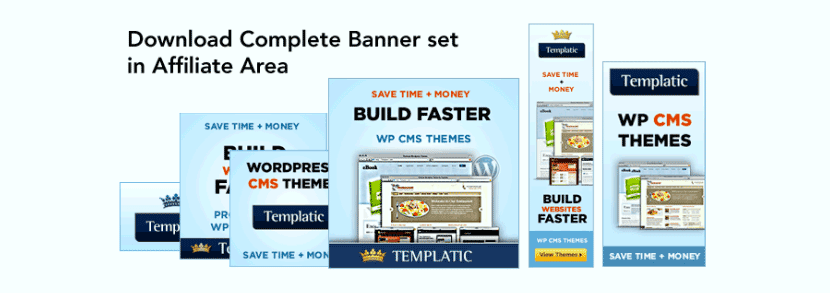
- In-text content links.
This is a very common way to promote offers. For example, you will often see a blog post with links to certain products or services. If the reader clicks through and makes a purchase, the blog owner will make a commission. These in-text links blend in with other content on your site and are a great way of promoting an offer within your content, without being over-the-top salesy with banners.
- Email promotions.
If you have built up an email list, you could also promote your affiliate offers via email promotions. Just make sure you build up a relationship with your audience first instead of going for the hard sell straightaway. The emails you send out must contain your affiliate links to products so when your audience click through. the sale is attributed to you.
- Discounts and giveaways.
Many affiliate programs will often run promotions with good discounts or giveaways that might be attractive to your audience. For example, if you’re an Amazon Associate and the site have a big Holiday Sale, it would be the perfect opportunity for you to promote discounts to your website visitors. This is a great way to promote your offers while also providing good value to your audience.
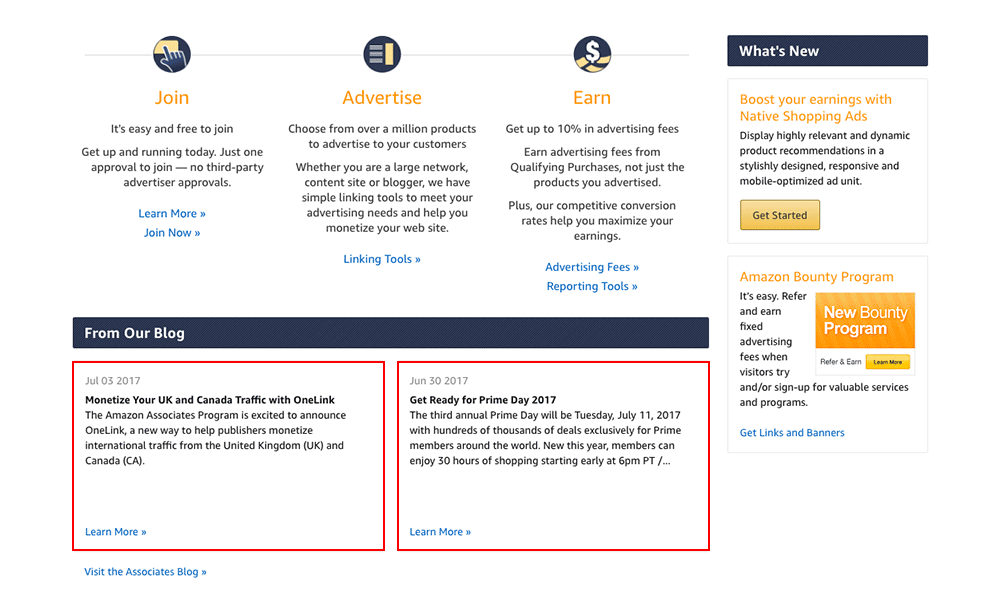
When promoting affiliate offers, just make sure you are fully aware of all the terms and conditions attached to your affiliate program. Some programs can be strict about how they allow you to promote their products. For example, some may limit you to banner ads and links only, while others will allow you to use paid advertising, but won’t allow email marketing.
Also, make sure you have a disclaimer on your website that advises your audience that you may have links that promote affiliate offers. This is necessary for several affiliate programs and also a basic courtesy to your website visitors. In the U.S., the FTC mandates disclosure for affiliate marketers (and anyone issuing endorsements), as well.
Additional Resources for Promoting Your Offers
- Free Lesson: Writing Product Reviews
- From the Affilorama Community:
- The FTC’s Endorsement Guides: What People Are Asking
7. Rinse, Lather, and Repeat
Now that you’re done with Steps 1 – 6, Step 7 is simply to keep doing what you’re doing. Yes, seriously!
Your ongoing work as an affiliate marketer will be to repeat steps 4 – 6 on a continual basis. Building a site up to a point where it can make you consistent income takes a bit of work and you must be willing to constantly create, promote, market, innovate and of course, sell.
Review of Key Points
It can feel overwhelming to do all the n

